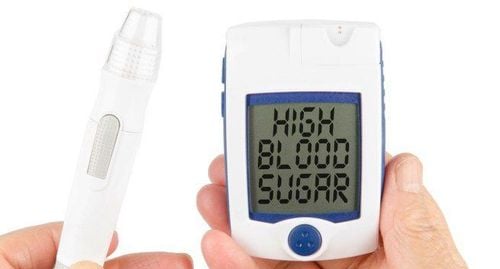This is an automatically translated article.
Monast 10 belongs to the group of drugs that act on the respiratory tract, which is made in the form of tablets. The main ingredient of Monast 10 is Montelukast, which is used in the treatment and prevention of chronic bronchial asthma. However, the drug can cause some side effects during use such as: Increased bleeding, dizziness, drowsiness, ... Therefore, patients need to carefully learn the information of the drug before using it. and adherence to treatment.1. Mechanism of action of the drug Monast 10
Monast 10 contains the ingredient Montelukast used to prevent wheezing, shortness of breath due to asthma or reduce the number of asthma attacks. Not only that, but Monast 10 is also used before exercise to prevent breathing before performing exercises such as bronchospasm. Monast 10 is also used to treat year-round allergy symptoms in adults and children who are at least 6 months old.2. Indications and contraindications for the use of Monast 10
What does Monast 10 do? Monast 10 is indicated for the prevention and treatment of chronic bronchial asthma in adults and children 15 years of age and older. Monast 10 can be used both for the prevention of asthma symptoms or for those who are sensitive to aspirin or for the prevention of exercise-induced bronchospasm.However, the drug Monast 10 is also contraindicated in cases of excessive hypersensitivity to the drug's components.
3. Dosage and how to use Monast 10
Monast 10 is taken orally and is taken once a day on an empty or full stomach. For asthma treatment, use Monast 10 in the evening. But with the treatment of allergic rhinitis, the duration of use depends on the needs of the patient. However, for patients with both asthma and allergic rhinitis, it is recommended to use one tablet of Monast 10 in the evening. In the case of patients aged 15 years and older and suffering from Ben or Allergic Rhinitis, they should use Monast 10mg, 10mg per day, or 50mg twice daily. Monast 10 is used in people with mild renal or hepatic impairment that usually does not require a dose adjustment. It should be noted: The above recommended therapeutic dose for Monast 10 is for reference only. Therefore, before using Monast 10, patients need to be prescribed by a doctor.4. Management of missed dose and overdose of the drug Monast 10
If you miss a dose of Monast 10, use the missed dose as soon as you remember. However, if the interval between the missed dose of Monast 10 and the next dose is too close, skip the missed dose. Patients should not use a double dose of Monast 10, because it can cause an overdose. To overcome the situation of missing a dose of Monast 10, patients can set an alarm or ask their loved ones to remind them. In case of accidentally using Monast 10 drug in excess of the prescribed amount and showing some unwanted signs, the patient should be taken to the emergency room immediately. However, family members can apply some preliminary treatment measures when poisoning with Monast 10 such as: gastric lavage and vomiting. Then take the patient to a medical facility for treatment.5. Unwanted side effects when using Monast 10
Monast 10 may cause some unwanted side effects during treatment. However, for each case, the side effects of Monast 10 may vary from mild to severe.Some common side effects caused by Monast 10 include fatigue, drowsiness, dizziness, headache, nosebleeds, dry mouth, weakness, fever,... These side effects may occur. occurs at the start of treatment or after an increase in the dose of Monast 10. Usually, side effects from Monast 10 can be transient or subside over time.
However, in some cases, Monast 10 can cause serious unwanted side effects with rare reactions. These reactions may appear within minutes of using Monast 10 or longer for a few days. When the occurrence of serious side effects such as: upper respiratory tract infection, tooth bleeding, eosinophilic infiltration, seizures, palpitations, hepatitis, angioedema, increased plasma ALT and AST,. .. the patient should stop using Monast 10 and go to a medical facility for immediate medical assistance.
Some notes in the process of using Monast 10:
For pregnant and lactating women, caution should be taken when using Monast 10. Patients should be advised to use Monast 10 from their doctor. and carefully analyze the benefits and risks before using the drug. Monast 10 may change how it works as well as increase its side effects. Therefore, to avoid drug interactions, the patient should provide the doctor with a list of previously used drugs including prescription drugs, non-prescription drugs and herbs, etc. The above is important information about Monast 10 medicine, patients should carefully read the instructions for use and use according to the dose prescribed by the doctor to achieve the best effect.
Please dial HOTLINE for more information or register for an appointment HERE. Download MyVinmec app to make appointments faster and to manage your bookings easily.













